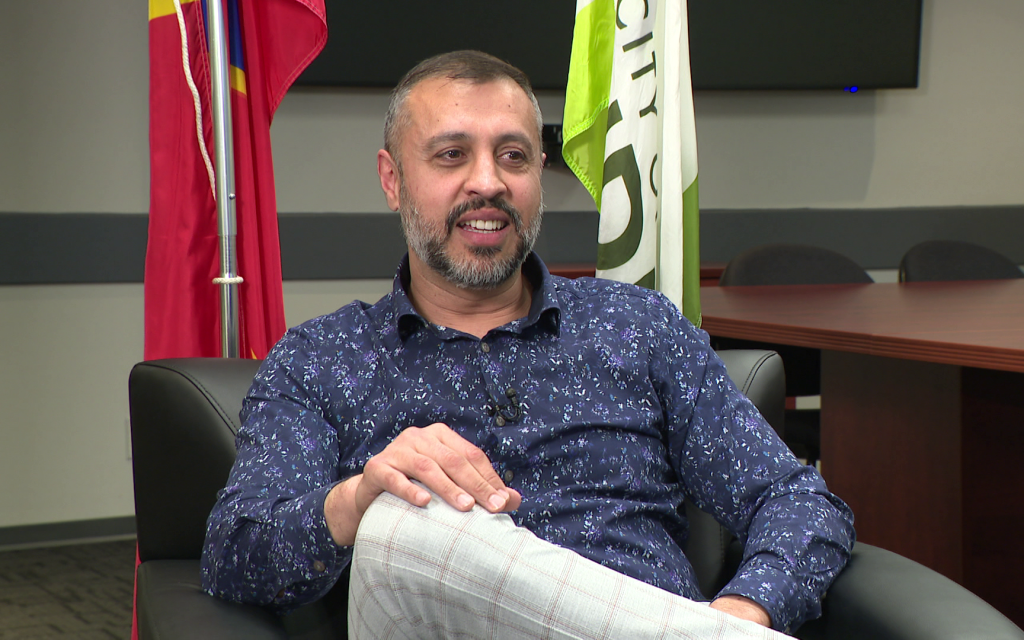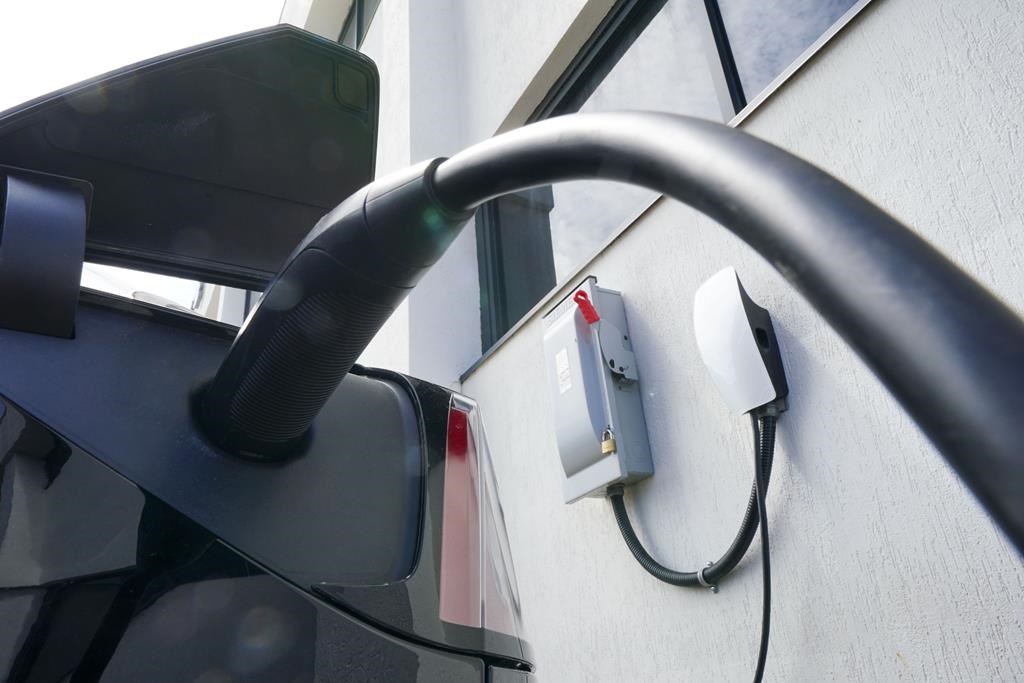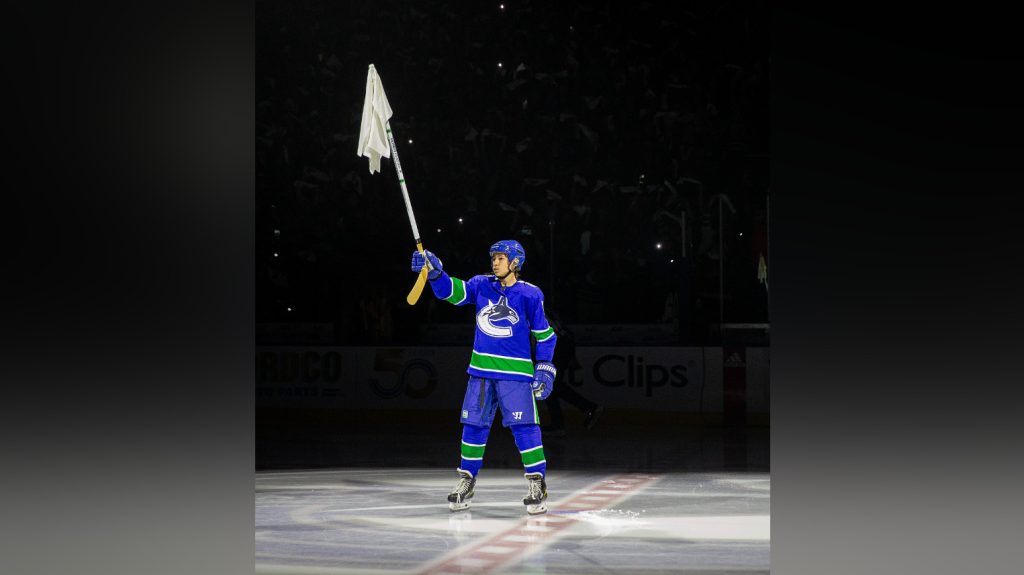At 31, Ryan Coogler ascends to the top with ‘Black Panther’
Posted February 14, 2018 8:35 am.
Last Updated February 14, 2018 9:00 am.
This article is more than 5 years old.
BEVERLY HILLS, Calif. – Ryan Coogler was feeling overwhelmed by “Black Panther.”
It was only his third feature film and, at just 30-years-old, he was making it with Hollywood’s most powerful studio under enormous cultural expectations and with $200 million to get it right.
And he really didn’t want it to “suck” (his word).
The Oakland, California, native got into filmmaking almost on a lark when a creative writing professor at St. Mary’s College in Moraga, California, where he was attending on a football scholarship, suggested he look into screenwriting. He had thought he would play football and be a doctor, maybe, to help his community. But this idea of being a filmmaker took hold, and after making a splash at the USC School of Cinematic Arts, he had solidified himself as one of the most promising and vibrant young directors to watch.
His first feature, the indie “Fruitvale Station,” about the final 24 hours of Oscar Grant III, put him on the map after winning the Sundance Grand Jury and Audience prizes in 2013, a handful of critics groups awards and a Film Independent Spirit Award. His second, the “Rocky” spin-off “Creed,” put him on another level.
The $35 million film grossed over $173 million worldwide and reinvigorated a franchise for Warner Bros.
It’s the kind of one-two punch that made people who didn’t even know him at the time, like actress Danai Gurira, feel proud.
“I had been at Sundance the same time he was there with ‘Fruitvale Station.’ I had so much respect and pride,” Gurira said. “I had never met him but I was proud of him, of what he’d done and how he’d moved forward in the world and told stories that needed to be told.”
Still, “Black Panther” was going to be a huge leap, even if odds that it would “suck” were slim. Coogler, 31, was used to making personal films at his own speed. This was a different beast — with visual effects, a huge ensemble cast and set pieces that would make any veteran filmmaker wake up in a cold sweat.
“This is the first project that I ever did that I felt like I had to make peace with the fact that I would never be caught up in my work,” Coogler said. “I had to figure out how to let myself rest. You could work 24 hours a day and it still wouldn’t be enough on a film like this. There’s so much happening and so many decisions to be made.”
“I had to learn to be more efficient,” he added. “I got to learn how to do in 30 minutes what it took me two hours to do on the last movie.”
To help, Coogler surrounded himself with a handful of constants, like his muse Michael B. Jordan, cinematographer Rachel Morrison, production designer Hannah Beachler and editor Michael Shawver, and got used to trusting those he hired to go off and do their jobs while he did his, knowing that he couldn’t get hung up on details like what colour someone’s shoes would be. That’s what Oscar-nominated costume designer Ruth E. Carter was there for, after all.
And Jordan, who starred in both “Fruitvale Station” and “Creed,” said Coogler handled the pressure well.
“I didn’t have as much time as I usually have with him. He had so many other things to tackle,” Jordan said. “But other than that he’s the same guy and that’s what makes Ryan Ryan. He’s unapologetically who he is 24-7. And he’s consistent. A lot of people can’t say that about themselves. We’re still blasting music in between set-ups and takes and everybody on the crew was feeling like a big family. It was awesome.”
On “Black Panther,” Jordan just wanted to be there to support his friend when he needed it — Coogler always did it for him.
“Every movie that we’ve done I’ve been in some physically uncomfortable situations whether it’s being freezing cold out somewhere or taking a punch or being in some extreme situation. Ryan? If I’m cold he’s going to be cold. If I’m in some thin T-shirt or shirtless or in the elements, he’s going to take his shirt off too and be right there with his actor,” Jordan said. “He’s willing to do whatever it is, whatever the actor is going through so we can do it together. That’s a testament to him, man, teamwork, just being there for each other. I think that’s rare. And it makes you want to follow him even more. He’s a great leader.”
Even recruits to the Coogler universe like Daniel Kaluuya and Letitia Wright felt part of the “family.”
“I don’t have the work, the credentials such as my other cast mates,” said Wright. “I’m still piecing my career together. But he never made me feel less than, he never made me feel like I’m a newcomer.”
Kaluuya felt similarly.
“He sees people. He sees the content of their character. And he’s smart, he’s deeply intelligent. You can see it in his films. Not every 30-year-old could do this,” Kaluuya said. “He’s a special, special director.”
Coogler ultimately began to trust that the Marvel Studios execs actually did want him to make his own decisions and the deliver the film he always wanted to. Now he just hopes what he’s made isn’t going to fade.
“The fear I have is that you make something that’s like dispensable, disposable, something somebody watches and forgets. I like movies that you can go back to. Movies that feel like they were always around, as soon as you see it, it feels like it was always there,” Coogler said. “The worst thing in the world is to make this movie and be like, “Oh that was ok and on to the next.” Especially not for this one. It’s like you’ve got one shot, you’ve got to get this right.”
___
Follow AP Film Writer Lindsey Bahr on Twitter: www.twitter.com/ldbahr
___
For more “Black Panther” coverage: http://apne.ws/zpnjk4s










